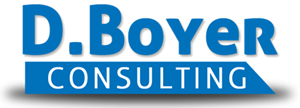Business is mostly conducted via email or phone communications.
Office hours 10:00 a.m. to 6:00 p.m, Mon. - Thurs., and 10:00 a.m. to 2:00 p.m. on Fridays.
SEND EMAIL INQUIRIES DIRECTLY TO:
Dawn.Boyer@me.com
Business is mostly conducted via email or phone communications.
Office hours 10:00 a.m. to 6:00 p.m, Mon. - Thurs., and 10:00 a.m. to 2:00 p.m. on Fridays.
SEND EMAIL INQUIRIES DIRECTLY TO:
Dawn.Boyer@me.com
Business is mostly conducted via email or phone communications.
Office hours 10:00 a.m. to 6:00 p.m, Mon. - Thurs., and 10:00 a.m. to 2:00 p.m. on Fridays.
SEND EMAIL INQUIRIES DIRECTLY TO:
Dawn.Boyer@me.com
LinkedIn: Why you don’t want to miss out on the activity
November 26th, 2012 by Dawn Boyer
LinkedIn: Why you don’t want to miss out on the activity.
Do you ever ask yourself – what good is LinkedIn? How can it help me pursue business development or a new career search? What effort do you put into learning about LinkedIn and its advantages? How much time do you spend on LinkedIn daily? What do you do while actively reviewing your account; what sections do you ‘lurk’ in more? Where do you go when you have a LinkedIn question? Do you search in the Q&A, do you ask others in groups, or do you go straight to the Help Desk & FAQs pages?
Time spent on LinkedIn varies by user, and LinkedIn doesn’t release stats on those figures (Facebook and Pinterest measures their user hours of activity). It is estimated that active users may spend about 3-8 hours weekly, while less active profiles may only check once a month or so. Those who spend a significant number of hours may be more actively engaging within the Q&A forum, as well as in group discussions.
It’s amazing how few know about the Answers feature on LinkedIn. The knowledge is incredible and easy to find from experienced Subject Matter Experts (SME) whom are willing to discuss a subject. Posing questions through ‘Answers’ usually returns a set of answers – rich in data. If you are not taking advantage of the ridiculous amount of information available to users, you are missing out. More often, querying on key words in the ‘Answers’ section provides ‘free’ and more directly relevant ‘sage’ advice than a query result from Google! It’s amazing how much ‘free’ accounting, legal, and management advice you can get for free from LinkedIn participants.
The Q&A (Answers) forum allows a SME to provide insight to solving others’ questions. The manner in which a response is worded conveys personal expression, opinion, and insight to those who may wish to team, counter, or pass on a reference to others. With growth of the site and international participation increasing dramatically, the Answers feature provides insights into international viewpoints and cultures, as well as valuable knowledge and information within the wired global economy. Ratings features allow evaluations of responses by a peer group. This allows readers to quickly focus on the best answer locked at the top after the question is closed and rated.
Linked In users are evaluated by reviewers for consistency and perceived value of a question and its’ answers. Participants keep an open mind to input (and discount the narrow-minded use for personal or business gain). The historical record of questions and answers is searched by a worldwide community – including news media, reporters, and researchers; it draws others to individual profiles and business web sites long after a question closes. This helps build business relationships and creates public relations that keep on working long after the writer has forgotten about posting the question.
Groups on LinkedIn are an under-explored territory to develop business relationships. Be brave, make comments, and pose a question in groups. Join groups related to social media outside LinkedIn to learn more about the benefits and uses, or geographically centered groups that may meet ‘off-line.’ (An excellent way to meet potential future employers or business clients.) The Home Page is a forum to broadcast ones activities (similar to Facebook wall posts) throughout the day to reach connections. Users can review, as well as filter, those posts: changing from all to only direct connections (1st degree), companies, schools, apps, jobs; enabling a profile owner to filter and separate the weeds from the seeds (of knowledge).
Learning about LinkedIn is simple. Query on YouTube, search through SlideShare, or Box.net for training presentations. Take a LinkedIn class online or via local training entities. Take 2-4 hour classes taught by experts from within the community to get one-on-one immediate feedback training. Or take the time to explore the website and learn a baby-step at a time.
Some business-minded folks are not eager to learn to use LinkedIn providing excuses from ‘I don’t have time,’ to ‘I am not computer savvy, and don’t know where to start.’ If you don’t try to learn, won’t set aside time to develop your skills, and can’t open your mind – you will miss out on some fantastic business networking opportunities!
Dawn Boyer is the owner of D. Boyer Consulting (https://dboyerconsulting.com), a career services coach, social media management, human resources and business development consulting firm. She can be reached at Dawn.Boyer@me.com for resume writing services or LinkedIn training.
Readers Comments
LinkedIn: Why you don’t want to miss out on the activity
November 26th, 2012 by Dawn Boyer
LinkedIn: Why you don’t want to miss out on the activity.
Do you ever ask yourself – what good is LinkedIn? How can it help me pursue business development or a new career search? What effort do you put into learning about LinkedIn and its advantages? How much time do you spend on LinkedIn daily? What do you do while actively reviewing your account; what sections do you ‘lurk’ in more? Where do you go when you have a LinkedIn question? Do you search in the Q&A, do you ask others in groups, or do you go straight to the Help Desk & FAQs pages?
Time spent on LinkedIn varies by user, and LinkedIn doesn’t release stats on those figures (Facebook and Pinterest measures their user hours of activity). It is estimated that active users may spend about 3-8 hours weekly, while less active profiles may only check once a month or so. Those who spend a significant number of hours may be more actively engaging within the Q&A forum, as well as in group discussions.
It’s amazing how few know about the Answers feature on LinkedIn. The knowledge is incredible and easy to find from experienced Subject Matter Experts (SME) whom are willing to discuss a subject. Posing questions through ‘Answers’ usually returns a set of answers – rich in data. If you are not taking advantage of the ridiculous amount of information available to users, you are missing out. More often, querying on key words in the ‘Answers’ section provides ‘free’ and more directly relevant ‘sage’ advice than a query result from Google! It’s amazing how much ‘free’ accounting, legal, and management advice you can get for free from LinkedIn participants.
The Q&A (Answers) forum allows a SME to provide insight to solving others’ questions. The manner in which a response is worded conveys personal expression, opinion, and insight to those who may wish to team, counter, or pass on a reference to others. With growth of the site and international participation increasing dramatically, the Answers feature provides insights into international viewpoints and cultures, as well as valuable knowledge and information within the wired global economy. Ratings features allow evaluations of responses by a peer group. This allows readers to quickly focus on the best answer locked at the top after the question is closed and rated.
Linked In users are evaluated by reviewers for consistency and perceived value of a question and its’ answers. Participants keep an open mind to input (and discount the narrow-minded use for personal or business gain). The historical record of questions and answers is searched by a worldwide community – including news media, reporters, and researchers; it draws others to individual profiles and business web sites long after a question closes. This helps build business relationships and creates public relations that keep on working long after the writer has forgotten about posting the question.
Groups on LinkedIn are an under-explored territory to develop business relationships. Be brave, make comments, and pose a question in groups. Join groups related to social media outside LinkedIn to learn more about the benefits and uses, or geographically centered groups that may meet ‘off-line.’ (An excellent way to meet potential future employers or business clients.) The Home Page is a forum to broadcast ones activities (similar to Facebook wall posts) throughout the day to reach connections. Users can review, as well as filter, those posts: changing from all to only direct connections (1st degree), companies, schools, apps, jobs; enabling a profile owner to filter and separate the weeds from the seeds (of knowledge).
Learning about LinkedIn is simple. Query on YouTube, search through SlideShare, or Box.net for training presentations. Take a LinkedIn class online or via local training entities. Take 2-4 hour classes taught by experts from within the community to get one-on-one immediate feedback training. Or take the time to explore the website and learn a baby-step at a time.
Some business-minded folks are not eager to learn to use LinkedIn providing excuses from ‘I don’t have time,’ to ‘I am not computer savvy, and don’t know where to start.’ If you don’t try to learn, won’t set aside time to develop your skills, and can’t open your mind – you will miss out on some fantastic business networking opportunities!
Dawn Boyer is the owner of D. Boyer Consulting (https://dboyerconsulting.com), a career services coach, social media management, human resources and business development consulting firm. She can be reached at Dawn.Boyer@me.com for resume writing services or LinkedIn training.












